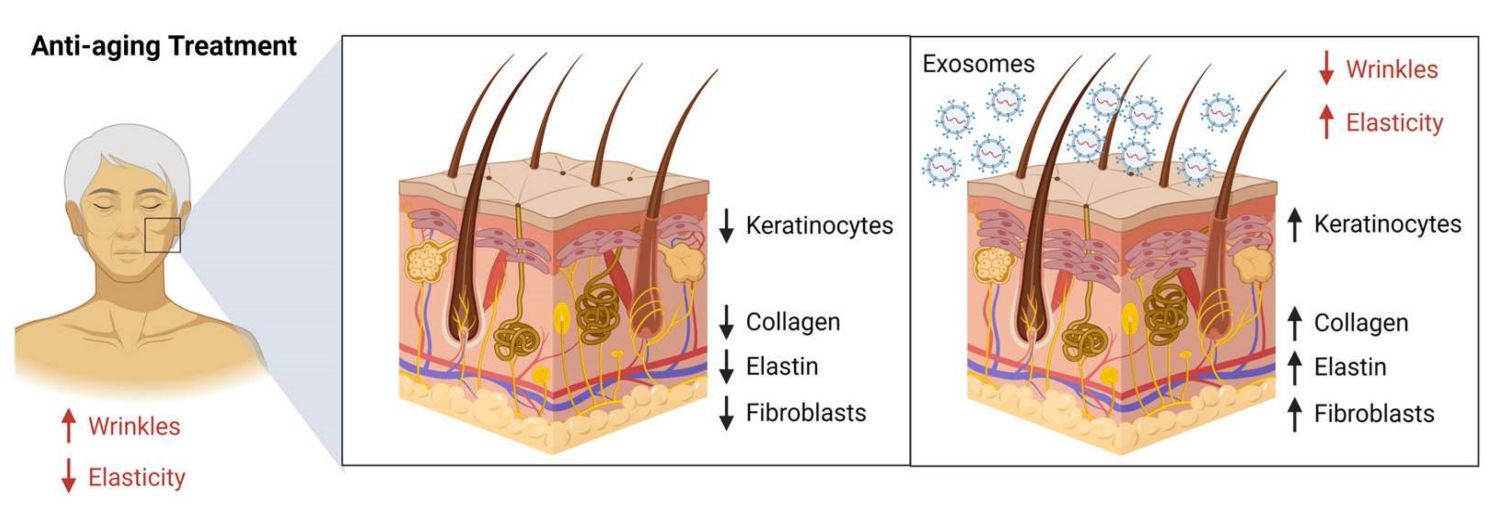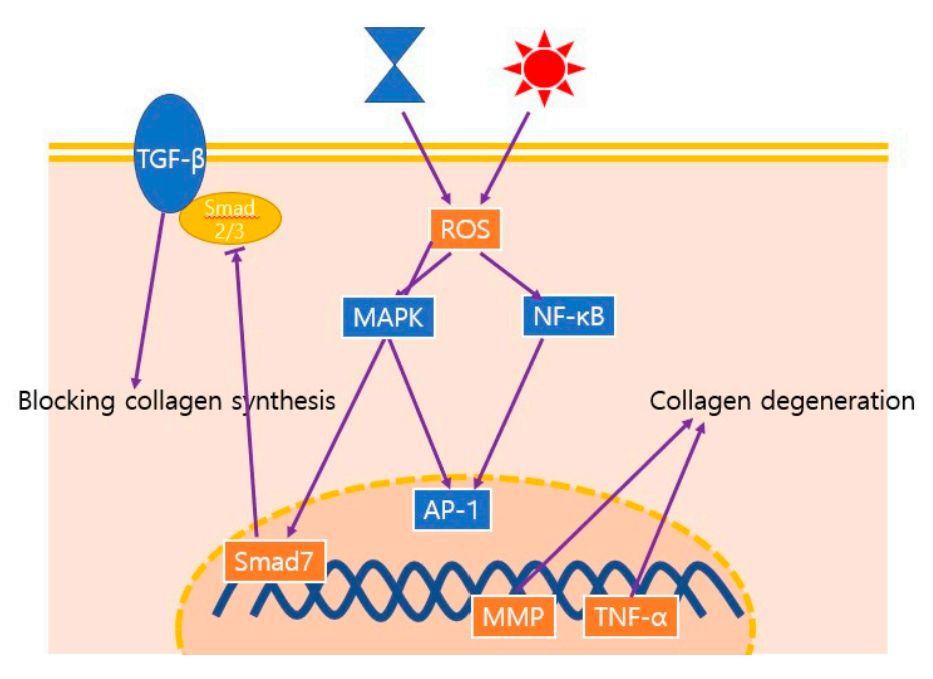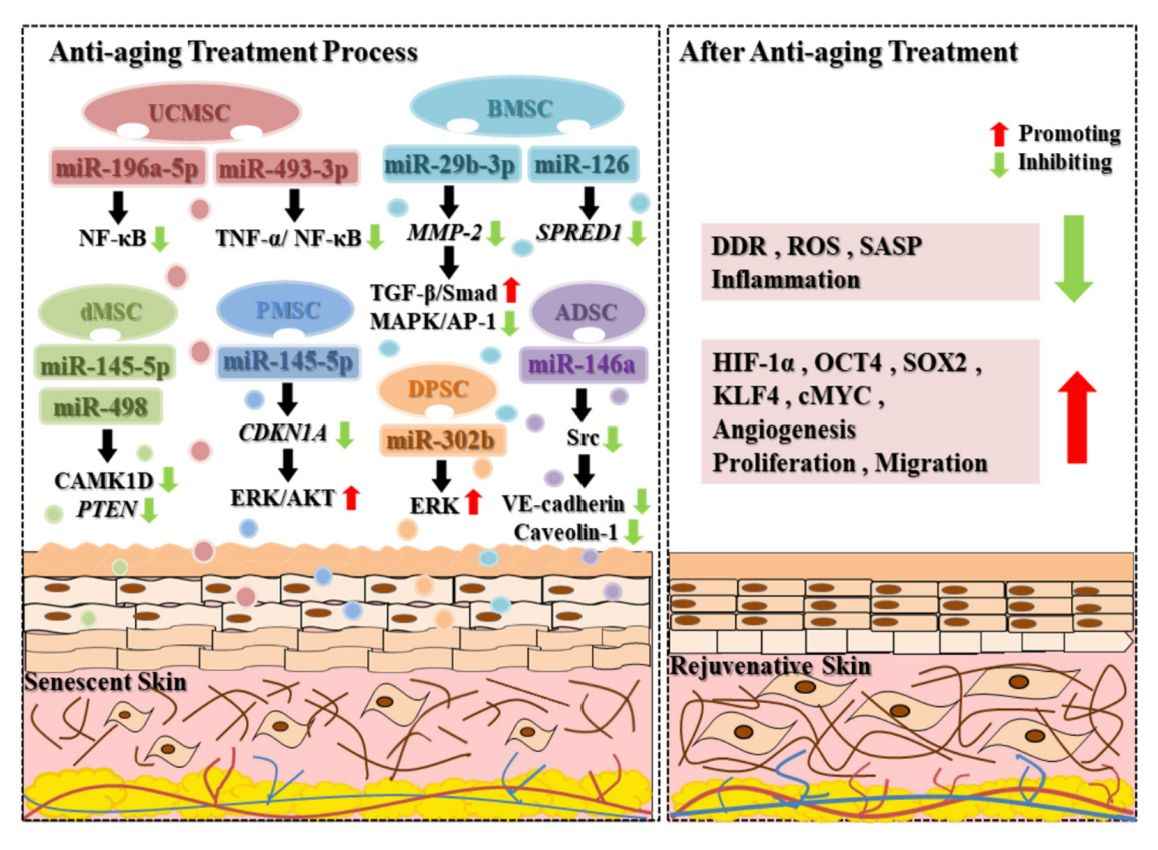Exosome Therapy in Wrinkle Reduction and Anti-aging
Skin aging is physiological and unavoidable and is characterized by atrophy, fragility, repair defects, immunodeficiency, and susceptibility to infections, as well as by multiple marks of aging on the skin. A series of negative consequences of skin aging have led to an increasing demand for anti-aging treatments. In recent years, exosomes, as an emerging anti-aging ingredient, have gradually come into the public's view. So, what exactly is an exosome? What is unique about it in the field of anti-aging?
Introduction to Exosomes
Exosomes are tiny vesicles secreted by cells, approximately 30-150 nanometers in diameter, with a lipid bilayer membrane structure. They can be secreted by a wide range of cells in normal and pathological states and are widely found in body fluids, including blood, saliva, urine, cerebrospinal fluid, and milk. Exosomes are rich in inclusions, including nucleic acids, proteins, and lipids. It has been found that exosomes are unique in their ability to deliver bioactive molecules such as growth factors, mRNAs, miRNAs, etc., thus stimulating skin cell regeneration and repair and improving aging problems.
 Figure 1. Role of exosomes in anti-aging therapy. (Thakur A, et al., 2023)
Figure 1. Role of exosomes in anti-aging therapy. (Thakur A, et al., 2023)
Mechanisms of Aging
Aging is a complex biological process involving several factors. One of the primary causes is the loss of collagen. Collagen is the main support structure of the skin and its loss leads to sagging and wrinkles. In addition, factors such as breakage of elastic fibers, slowing down of skin cell metabolism, and oxidative stress accelerate facial aging. External environmental factors such as ultraviolet rays and pollution can also cause damage to the facial skin and accelerate the aging process.
 Figure 2. Major signaling pathways involved in the aging process. (Lee H, et al., 2021)
Figure 2. Major signaling pathways involved in the aging process. (Lee H, et al., 2021)
Advances in Exosomes in Wrinkle Reduction and Anti-Aging Research
Currently, exosome therapy is recognized mainly in the regenerative repair of multiple organs and systems such as cardiovascular, liver, and nerves by stem cell-derived exosomes, which shows the potential of stem cell-derived exosomes in anti-aging. At the same time, it is also shown that senescent fibroblasts (HDFs) expressed a 4-fold increase in exosomes, and HDFs secrete elastin, collagen, and other substances, which play an important role in maintaining the elasticity and moisture of the skin. This suggests a possible role for senescent cell-derived exosomes in the skin aging process.
Mechanisms of Exosomes in Wrinkle Reduction and Anti-Aging
- Promotes Migration and Proliferation of Keratinocytes
Different sources of mesenchymal stem cells (MSC)-exo can promote skin cell proliferation and accelerate epidermal regeneration. Adipose-derived mesenchymal stem cell exosomes (ADSC-exo) have been shown to promote the migration and proliferation of keratinocytes in vitro and have anti-wrinkle ability.
- Promote the Proliferation of Fibroblasts
Exosomes enhance fibroblast proliferation in a concentration-dependent manner and can reverse UV-induced fibroblast aging. For example, umbilical cord mesenchymal stem cell exosome (UCMSC-exo) promotes fibroblast proliferation and collagen synthesis by up-regulating the gene expression of N-cadherin, cyclin-1, PCNA, collagen type I, and collagen type III.
- Inhibits the Activity of Matrix Metalloproteinases (MMPs)
MMPs are mainly responsible for the degradation of extracellular matrix, especially collagen fibers and elastin fibers that constitute the dermal structure, so MMPs are one of the main targets to regulate skin photoaging. Regulation of MMPs by MSC-exo reduces damage to elastic and collagen fibers in the dermis and improves dermal aging.
- Attenuating Skin Oxidative Stress
Adipose-derived mesenchymal stem cell exosomes (ADSC-exo) reduce ROS production. Exosomes have a certain function in the production and removal of ROS. By inhibiting ROS, it can reduce the oxidative stress damage of the skin, which brings new hope for improving skin aging.
 Figure 3. Anti-aging mechanisms of exosome in mesenchymal cells. (Zheng J, et al., 2024)
Figure 3. Anti-aging mechanisms of exosome in mesenchymal cells. (Zheng J, et al., 2024)
Application of Plant Exosomes in Anti-aging
Although plant exosomes have only gained attention in recent years, there have been several studies on their anti-aging effects. For example, exosomes derived from Aloe vera have antioxidant and pro-repair properties. The introduction of exosomes from Aloe vera reduces intracellular free radical production under stress conditions and also promotes the migration of epidermal cells and fibroblasts. Strawberry-derived exosomes are encapsulated with antioxidant components such as Vitamin C, providing an extremely strong antioxidant effect. Ginseng-derived exosomes can ameliorate the senescence phenotype of human skin fibroblasts by down-regulating senescence-related molecules and melanin formation-related proteins, as well as the pigmentation phenotype associated with human melanocyte senescence under UV radiation.
Services and Products We Offer
Creative Biostructure utilizes exosomes from different sources to satisfy the growing demand for effective natural solutions in the field of skin rejuvenation and anti-aging. Our comprehensive portfolio includes high-quality stem cell-derived exosomes as well as innovative plant-derived exosomes with unique bioactive components and therapeutic properties.
By harnessing the regenerative power of stem cells and the antioxidant and anti-inflammatory benefits of botanical extracts, we enable clients to explore the vast potential of exosomes to reduce wrinkles, improve skin elasticity, and reverse aging. With our state-of-the-art exosome isolation and characterization capabilities, we offer well-defined, customizable exosome formulations to support our client's research and development efforts in cosmeceuticals and aesthetic medicine.
| Cat No. | Product Name | Source |
| Exo-SC01 | HQExo™ Exosome-PCS-500-011 | Exosome derived from human pre-adipose derived mesenchymal stem cell (PCS-500-011) |
| Exo-SC03 | HQExo™ Exosome-hTERT | Exosome derived from hTERT-immortalized Mesenchymal Stem Cell |
| Exo-SC04 | HQExo™ Exosome-MSC | Exosome derived from Xeno-Free Human Mesenchymal Stem/Stromal Cells and Media |
| Exo-SC02-1 | HQExo™ Exosome-PCS-500-012 | Exosome derived from human bone marrow-derived mesenchymal stem cell line (PCS-500-012) |
| Exo-SC02-2 | HQExo™ Exosome-Pla-MSC | Exosome derived from human placental derived mesenchymal stem cell |
| Exo-PDELN01 | HQExo™ Exosome-Garlic | Exosome derived from Garlic |
| PNE-VC02 | PNExo™ Exosome-Celery | Exosome derived from Celery |
| Exo-PDELN02 | HQExo™ Exosome-Ginger | Exosome derived from Ginger |
| Exo-PDELN03 | HQExo™ Exosome-Onion | Exosome derived from Onion |
| PNE-VB13 | PNExo™ Exosome-Broccoli | Exosome derived from Broccoli |
| PNE-FB13 | PNExo™ Exosome-Bilberry | Exosome derived from Bilberry |
| PNE-FA18 | PNExo™ Exosome-Apple | Exosome derived from Apple |
| PNE-FB33 | PNExo™ Exosome-Blackberry | Exosome derived from Blackberry |
| PNE-FB34 | PNExo™ Exosome-Blueberry | Exosome derived from Blueberry |
| PNE-FB42 | PNExo™ Exosome-Banana | Exosome derived from Banana |
| PNE-FLP04 | PNExo™ Exosome-Lily | Exosome derived from Lily |
| PNE-FLL05 | PNExo™ Exosome-Jasmine | Exosome derived from Jasmine |
| PNE-FLD10 | PNExo™ Exosome-Daffodil | Exosome derived from Daffodil |
| PNE-FLC13 | PNExo™ Exosome-Cactus | Exosome derived from Cactus |
| Explore All Exosome Products | ||
References
- Thakur A, et al. Therapeutic Values of Exosomes in Cosmetics, Skin Care, Tissue Regeneration, and Dermatological Diseases. Cosmetics. 2023. 10(2): 65.
- Lee H, et al. Structural and Functional Changes and Possible Molecular Mechanisms in Aged Skin. International Journal of Molecular Sciences. 2021. 22(22): 12489.
- Zheng J, et al. Applications of Exosomal miRNAs from Mesenchymal Stem Cells as Skin Boosters. Biomolecules. 2024. 14(4): 459.